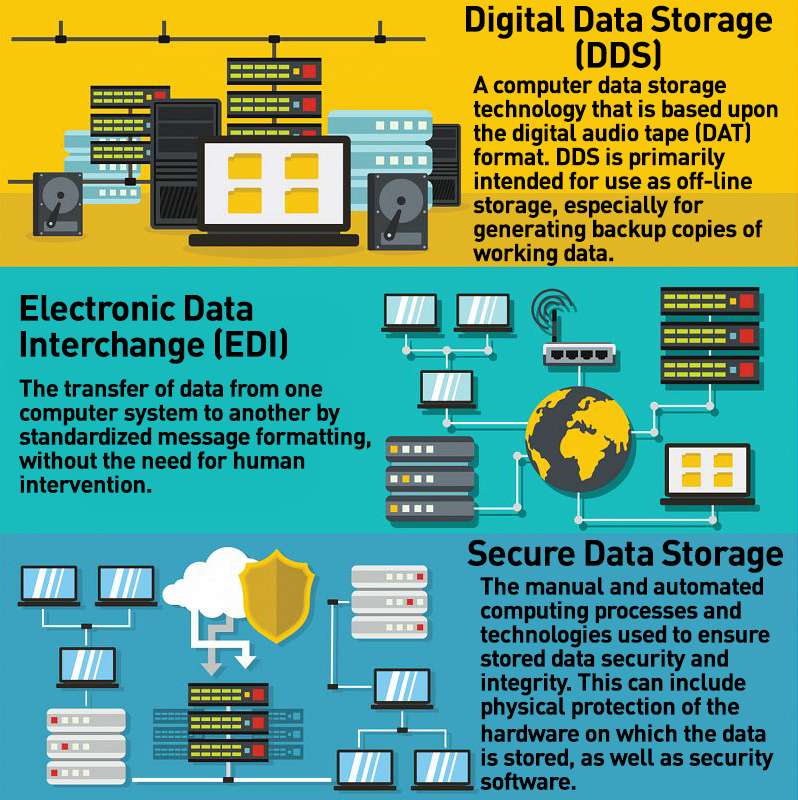The Relevance of Effective Information Destruction Practices in Shielding Sensitive Details and Ensuring Computer Protection
In an age where information breaches are significantly typical, the significance of effective information damage practices can not be overemphasized. Organizations face significant threats when sensitive info is improperly thrown away, possibly bring about unauthorized access and serious economic repercussions. Carrying out robust data damage techniques not only alleviates these risks but also straightens with legal compliance requirements, making sure that organizations maintain their credibility and foster customer trust. Nevertheless, the question continues to be: what certain strategies can be used to improve these techniques, and how can companies efficiently incorporate them right into their total cybersecurity framework?
Recognizing Data Destruction
Comprehending data destruction is crucial in today's digital landscape, where sensitive details can easily be jeopardized. Effective information destruction involves not just ensuring however removing files that data is irretrievable via extensive approaches. This procedure is crucial for organizations that take care of private customer details, copyright, or interior documents, as any type of violation can result in extreme financial and reputational effects.
Data devastation encompasses numerous techniques, including shredding physical media, degaussing magnetic storage space tools, and employing software-based services that overwrite data numerous times. Each approach serves a particular function and has to align with the sensitivity of the info being dealt with. As an example, physical devastation is frequently chosen for disk drives consisting of very personal information, while software program methods might be enough for less sensitive information.
Moreover, adhering to industry standards and policies, such as the General Data Security Policy (GDPR) or the Medical Insurance Transportability and Accountability Act (HIPAA), is crucial for conformity and to mitigate legal risks. Organizations has to develop a durable information devastation plan, train workers on ideal techniques, and consistently examine their procedures to guarantee that all sensitive information is dealt with securely and effectively.
Threats of Inadequate Practices
Poor information devastation practices expose organizations to significant risks that can have far-reaching effects. When delicate details is not appropriately taken care of, it remains at risk to unapproved accessibility, which can result in data violations and identity theft. Such incidents not only compromise the safety and security of individuals yet additionally taint the organization's online reputation, causing a loss of consumer depend on and potential economic repercussions.
Furthermore, regulatory compliance is significantly stringent in numerous sectors. Failing to stick to data devastation policies can cause hefty fines and lawful activities versus organizations. These charges can draw away and stress financial sources focus from core company procedures.
Furthermore, the misuse of residual information can lead to intellectual home theft or corporate espionage, jeopardizing competitive benefits (data destruction). The effect of poor information devastation extends past immediate financial losses; it can also lead to long-lasting damages to brand name integrity and market position

Organizations need to identify that data protection is not entirely regarding preventing breaches; it likewise incorporates the responsible management of data throughout its lifecycle. Neglecting effective data damage procedures can have tragic implications, highlighting the need for robust measures to alleviate these threats.
Best Practices for Data Destruction
Executing efficient data destruction practices read the full info here is vital for securing delicate info and keeping conformity with governing criteria. Organizations needs to take on a multi-faceted technique to make sure that information is irretrievable, consequently protecting against unapproved gain access to and potential breaches.
First, information should be classified based upon level of sensitivity, enabling organizations to apply appropriate destruction techniques tailored to the degree of threat. For digital data, utilizing software-based data-wiping devices that abide with sector requirements can effectively overwrite existing data. Physical damage methods, such as shredding or degaussing, are critical for gadgets that save sensitive details, making certain total eradication.
Developing a clear information retention policy is essential, outlining just how long different kinds of information must be kept before damage. Normal audits of data storage space systems are also needed to determine unneeded or obsolete data requiring elimination.
Additionally, training staff members on the significance of information destruction and the details procedures to adhere to fosters a society of safety and security within the organization. Maintaining paperwork of information destruction processes gives accountability and supports compliance with outside guidelines and inner plans. By sticking to these ideal practices, organizations can substantially minimize the threats related to information direct exposure.
Legal and Conformity Factors To Consider

Failure to abide by these regulations can cause severe charges, consisting of substantial fines and reputational damages. Organizations must apply a robust information devastation policy that lines up with these lawful structures and offers clear standards on the proper techniques of information disposal, whether physical shredding or digital wiping.
In addition, preserving documents of data damage tasks is important for showing conformity throughout audits or inspections. By prioritizing lawful and compliance considerations, companies can boost their information safety and security pose and foster trust fund with stakeholders and clients, eventually contributing to an extra safe and secure data administration atmosphere.
Advantages of Effective Information Devastation
Reliable data damage methods prolong past home mere compliance; they provide considerable advantages to organizations that prioritize them. By guaranteeing that sensitive info is irretrievably ruined, organizations mitigate the risk of data violations and the possible economic effects connected with them. This positive method not only safeguards against unapproved gain access to however also enhances the total reliability of the company in the eyes of clients and stakeholders.
Implementing durable data destruction methods, such as physical destruction of storage space gadgets or advanced information cleaning methods, adds to the strengthening of a company's cybersecurity pose. data destruction. It decreases the possibility of intellectual residential property theft and protects exclusive details, consequently preserving an one-upmanship in the marketplace

Conclusion
In final thought, efficient data destruction techniques are essential for safeguarding delicate details and improving general computer security. Inevitably, a dedication to durable information devastation approaches promotes a culture of responsibility, thereby reinforcing a company's cybersecurity stance and keeping client count on.
